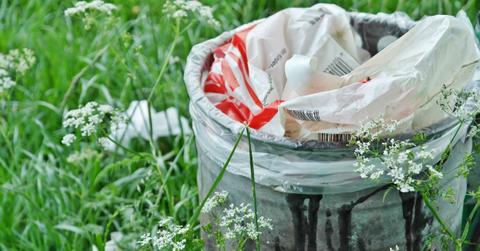New Hampshire's Pay-As-You-Throw Programs Are Reducing Waste By 50 Percent
Research suggests the trash pricing system is having an positive impact in the Granite State.
Updated Feb. 7 2019, 1:15 p.m. ET
In many New Hampshire towns, residents pay a premium for their waste. Since the 1990s, the state has embraced “pay-as-you-throw” trash programs, which charge locals $1-2 for their trash bags. The bags come in different sizes, but they are the only bags the garbage haulers will collect, so they naturally encourage residents to waste less.
The state capital of Concord adopted this system in 2009, following at least 35 other New Hampshire communities who had enacted similar policies long ago. The city of Dover, for instance, has been paying for throwing since 1991.
But do these pay-as-you-throw programs actually work? According to new research, yes. The University of New Hampshire recently studied 34 programs across the state and found that they significantly reduced trash disposal rates — in some cases, by more than 50 percent.
The UNH researchers evaluated the waste programs of 180 New Hampshire towns, representing 90 percent of the state’s population. The 34 towns with pay-as-you-throw programs saw waste disposal rates drop by 42 to 54 percent compared to towns without trash pricing. These towns averaged only 780 pounds of annual waste per household, while the towns without pay-as-you-throw programs generated an average 1511 pounds.
“Households respond to economic incentives,” John Halstead, a UNH professor of natural resources and the environment, said in a press release. “With unit-based pricing, the cost to the household may increase to dispose of trash, but the incentive to recycle is greater.”
The research was published in the Agricultural and Resource Economics Review earlier this year, with Halstead listed as one of three authors. (Ju-Chin Huang, a UNH professor of economics, and Christopher Wright, an adjunct professor for Montana State University, also worked on the report.)
The men studied data from 2008 to reach their conclusions, which was, as they note, a year of recession. Analysis from previous years showed “smaller impacts,” leading the researchers to wonder if the results were skewed by the economy.
Accordingly, the report recommends additional research on the impact of trash pricing over time, as well as their effect on recycling rates. While pay-as-you-throw programs are usually associated with a spike in recycling, the researchers did not find a statistically significant difference in recycling rates between New Hampshire towns with and without the programs.
Pay-as-you-throw has gained traction in cities and towns outside the Granite State. The last EPA report on the subject found 7,095 “PAYT” communities in America. They were especially popular in Oregon, Minnesota, Wisconsin, Washington, and New Hampshire — all states where the percentage of PAYT communities was 75 percent or higher. And they’re incredibly old news in some areas, which have been charging for trash since the 1970s.
